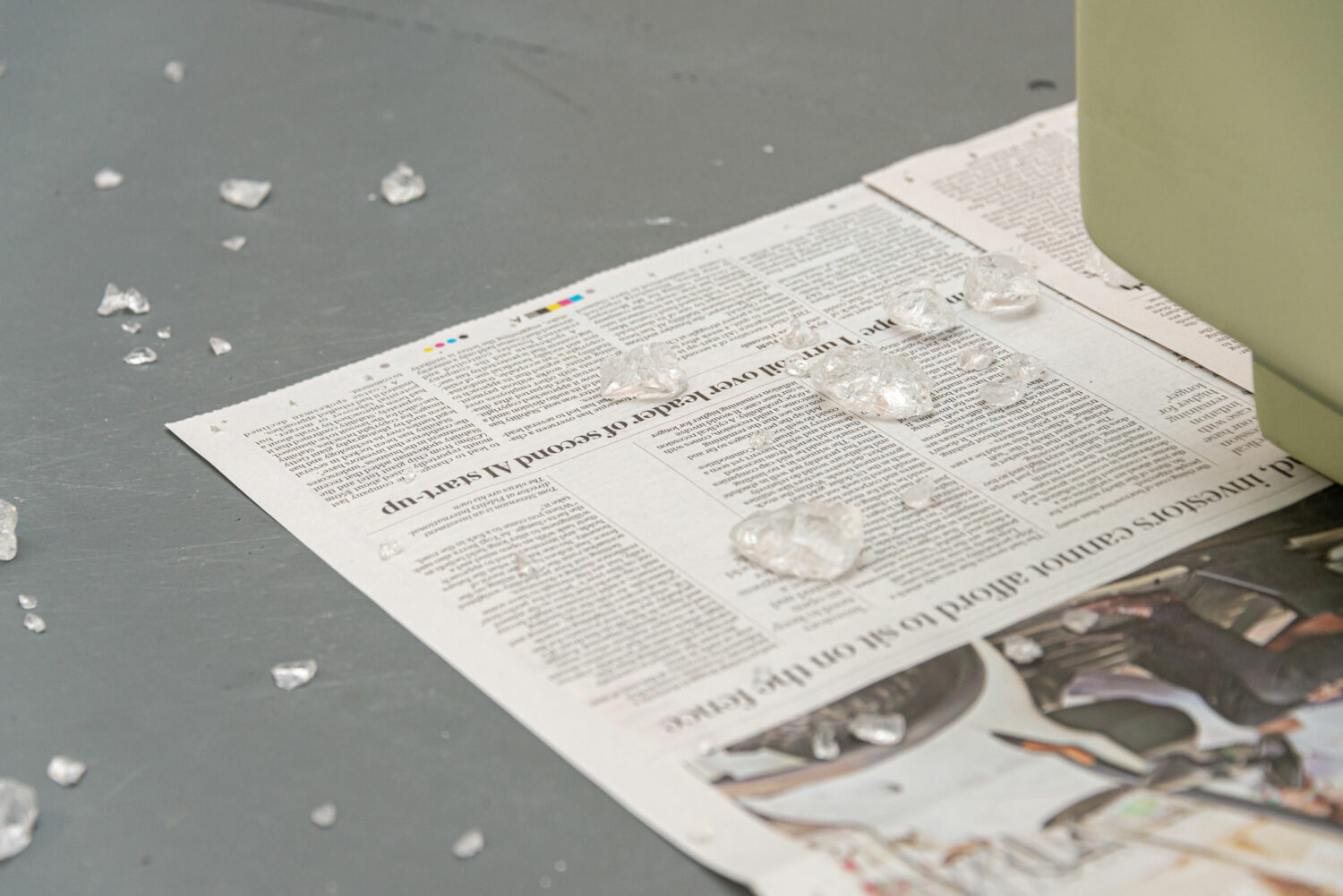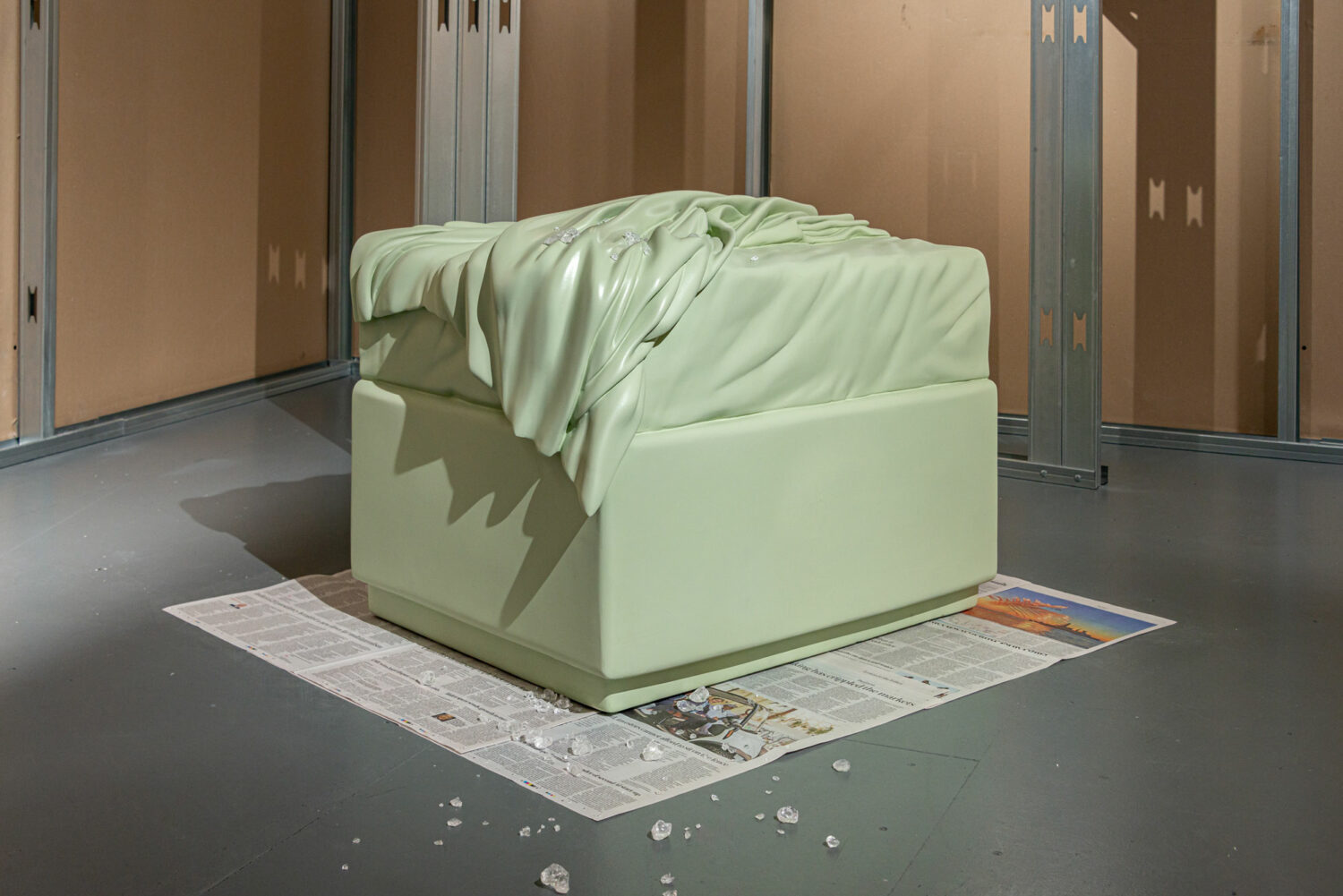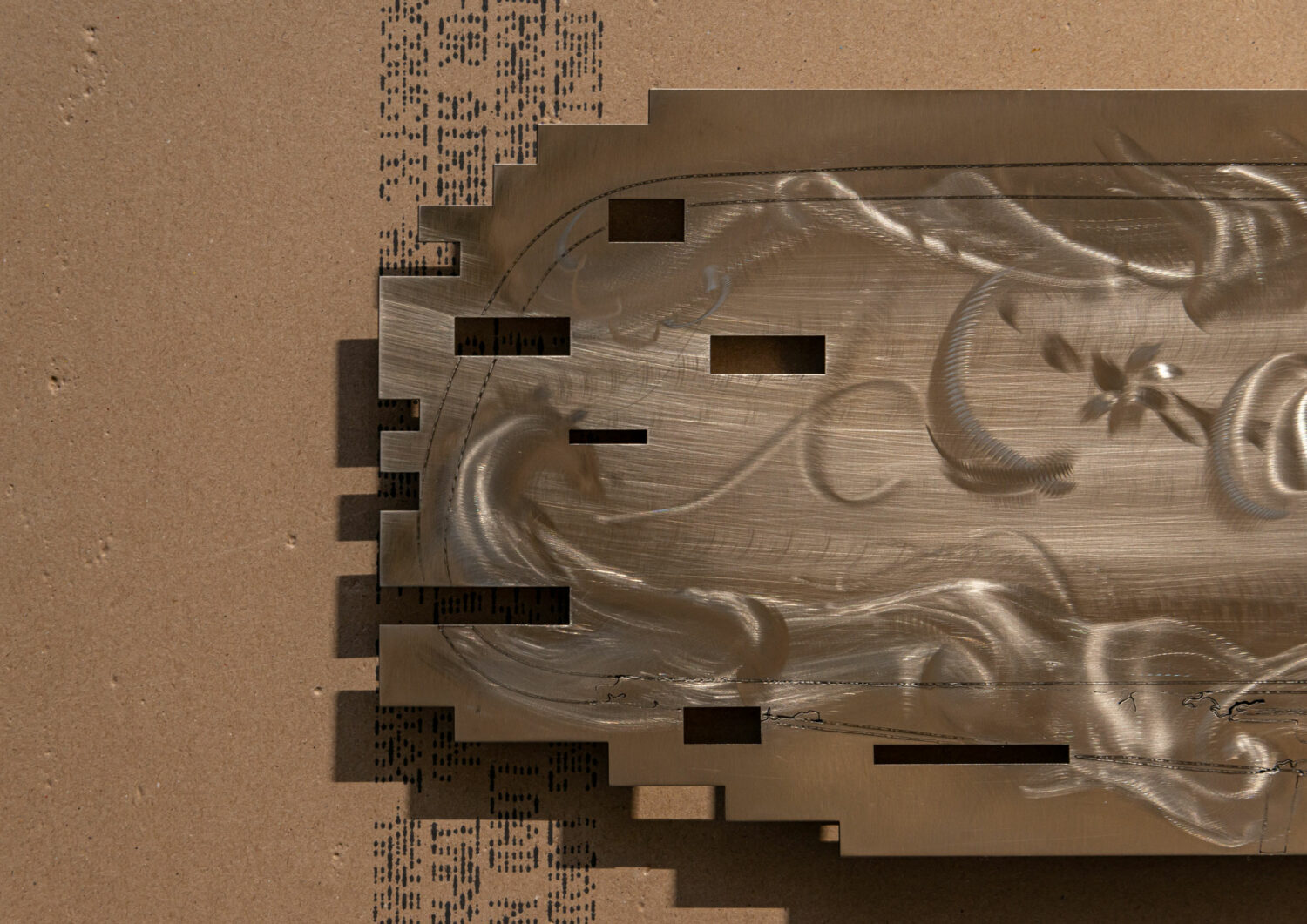Nothing New: Exhibition-Making Against the Myth of Novelty
By Kollektiv CollectiveFounded in 2019, Kollektiv Collective is a London-based curatorial collective run by Pia Zeitzen and Sasha Shevchenko. Working with and in support of emerging artists, Kollektiv focuses on exploring site-specificity, performativity and continuity as curatorial tools to transcribe the abstract into the visual. Their recent exhibitions include on the flip side was at Guts Gallery Project Space and Un/Sense at Christie’s, London.
Expanding on their latest exhibition, things fall apart; the centre cannot hold, running at Tabula Rasa Gallery until 26 January 2024, the duo explores the idea of curating in the absence of novelty in an essay for Something Curated.

Space is often treated as a given entity, a set parameter that one may accept or reject, but never truly shape. Albeit entirely abstract, vocabulary around “space” is frequently employed towards utilitarian ends, so much so that its simultaneously undefined and open-ended character is disguised. To reclaim space, assume responsibility that comes with guardianship and make it our own would presuppose our command of said entity. However, in the attempt to define it, we find ourselves circling back to the words of Gordon Matta-Clark: “I don’t know what the word “space” means… I keep using it. But I’m not quite sure what it means”.[1]
As curators, perhaps we belong to a loosely related field of professions that is acutely aware of this disposition, continuously negotiating the indefinable. Questions that probe space, its political implications, inheritance of ritual, and aesthetic charge have been guiding curatorial inquiry for decades. The exhibition space remains a localised, concentrated setting where art and people collide, ultimately in search of something, perhaps, new. Within this space, our question is, could exhibition-making offer an antidote for over abundance, rather than playing into the myth of novelty driving linear progress? What newness may exhibitions add instead?

Titled concurrently, things fall apart; the centre cannot hold is an exhibition about unravelling space in the name of reality doing the same. The works of artists Elli Antoniou, Ali Glover and Richard Dean Hughes conjure a space of dissonance and inverted expectations. Conceived in close artistic and curatorial collaboration, the works in the exhibition convey their relationship in whispers. To imagine flatness as no longer flat, the rigid no longer rigid, and functional devoid of use, is to imagine a resistance that leans into discomfort and betrays the status quo’s promise of solutions through progress. Within that friction…
“…the works theoretically and conceptually slice up the time-based elements of an object, and hypothetically stretch them back together, treating their concept and history as something that can be manipulated to create new scenarios.” — Richard Dean Hughes
Part of the hangover from the 20th century is the promise that, with technological progress, solutions to every problem will be invented. From reversing the climate crisis to AI problem-solving, innovation pledges to resolve the most complex issues of our time. The answer thus seems to lie in the shiny appeal of novelty. Mimicking wider social conventions, the art world, too, impatiently awaits the next bright thing. The seeming lack thereof makes some wonder – where is today’s equivalent to dead sharks in formaldehyde?[2] Caught in a neoliberal race of quick fixes and shock values, we risk missing the long anticipated. It might hide in the quiet while our demands for it are too loud.

While age-old debates about the death of painting reverberate relentlessly and industrial buildings have been hailed “unconventional” for decades on end, perhaps what we seek might not be found in applying the same old formula. As it stands, the world is not short of innovation, and yet, we have grown too fond of this state of perpetual anticipation. And so, if novelty categorically cannot recreate the impact of past avant gardes, where do we continue our search for meaning? In this vacuum, things fall apart proposes to stand still – to be able to listen. The answer lies not in commodifiable newness but in redefining resistance in face of the impossibility of true novelty. Probing how “resistance” may effectively take shape today, the curatorial rationale behind the exhibition proposes to look within. Now might be the time to pay attention to the subtle, underlying structures:
“Skin it encompasses the whole site for [things fall apart], turning the gallery inside out. The “wrong” side of the plasterboard shows you what could possibly be the un-layering of a gallery, or the other side of the set.” — Ali Glover
Exhibition spaces allow for a look within, and it is in this exercise that we find our tools of resistance. As Boris Groys writes, there are two ways of looking at exhibitions, namely through the “frontal gaze” and the “gaze from within”.[3] Inside a given space, being aware of one’s own presence adds a sensory layer to the otherwise visual experience. In other words, the gaze from within absorbs one’s subjectivity, like Elli Antoniou’s works that join a myriad of perspectives in one:
“As sculptures continuously regenerate under the play of light, they become fictional screens for an unfolding parallel reality.” — Elli Antoniou
Mirroring the shining metal, for Groys, the gaze from within is always fragmented – by being inside the space, one loses the panoramic perspective accessible to distant onlookers. We find similar motives in Donna Haraway’s concept of “situated knowledges”, whereby all knowledge is revealed to be conditioned by one’s social positioning – to time, place and identity.[4] It is argued, one may depart from the hegemony of oppressive structures through the tension made by dissonant knowledges in dialogue. The fragmented gaze from within that informs an exhibition space, electrified by the tension of situated knowledges that creates it, jointly illustrate how such spaces may propose structural shifts and, in that, rehearse disruption.

Ultimately, our curatorial motivation is to accommodate theory in spaces that visually and structurally bring their words to life. Circling back to our opening reflection on space, it is by manipulating the physical space that makes up the exhibition space that curating opens a door to collaborative experimenting – taking apart space and putting it back together. As an in-situ exercise of the above, things fall apart comes alive through the knowledges of three artists, two curators, and subsequently those of all publics who contribute with their “gaze from within”. Curatorially staging a whiplash in stop motion, the exhibition collapses in on itself. With an aim not to provide clear cut answers, but to listen to the sound of ruptures – we invite the viewer into its fragmentation, in the hopes they piece together a puzzle with unchanged pieces but in an unfamiliar way.
References
[1] Kirshner, J. and Matta-Clark, Gordon. “Interview with Gordon Matta-Clark.” In Moure, G. Gordon Matta-clark: Works and Collected Writings (Ediciones Poligrafa, 2006).
[2] Jones, J. “Frieze London art fair review – a graveyard of creativity for tasteless one percenters.” In The Guardian (October 2023).
[3] Groys, B. “Curating in the Post-Internet Age.” In e-flux (October 2018).
[4] Haraway, D. “Situated Knowledges: The Science Question in Feminism and the Privilege of Partial Perspective”, In Feminist Studies 14 (1988).
Feature image: things fall apart; the centre cannot hold (30 Nov – 26 Jan 2024) at Tabula Rasa Gallery. Courtesy of Kollektiv Collective and the artists. Photography by Gillies Adamson Semple.